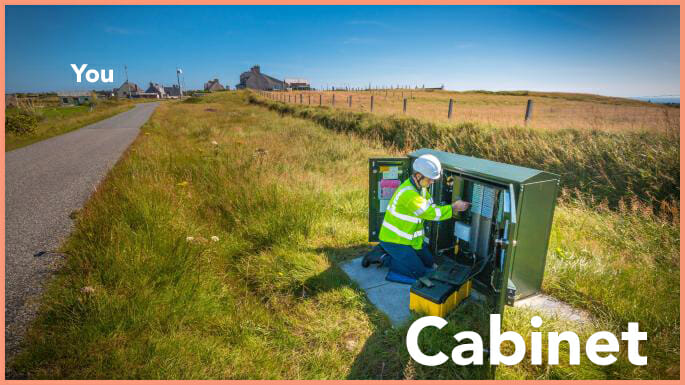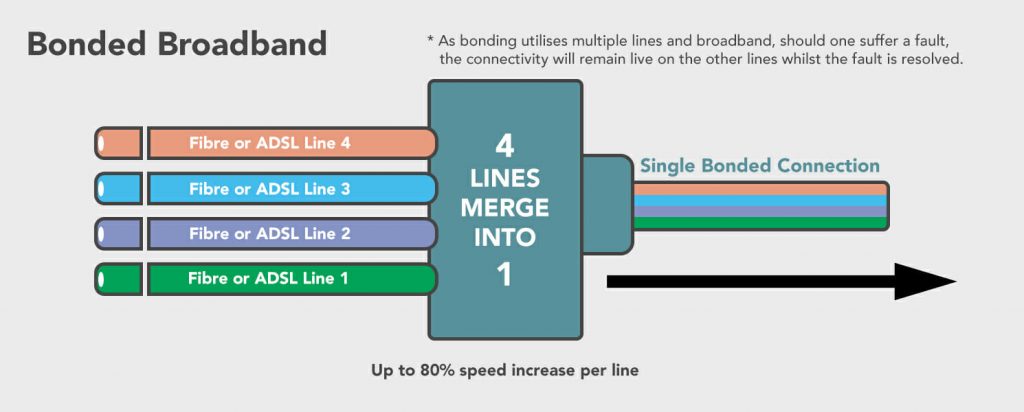Living, working or operating a business in a rural location can sometimes result in experiencing broadband complications. With people not even being able to consistently access their email accounts, let alone stream data, it can be endlessly frustrating.
Inadequate speeds, the anxiety over losing a connection and a lack of internet communication are common concerns for many, let alone for those using broadband in rural areas.
On top of this, people find themselves paying for promised “up to” internet speeds which they can’t realistically achieve.
So, what causes such rural broadband issues and what solutions are out there?

What factors affect broadband quality?
There are various possible factors which could be impacting your broadband service in a rural area.
Although your choice of provider and network are important, they are not always completely responsible for the slow data connection speeds; it can often be determined by a lack of infrastructure and investment.
The following factors can be detrimental to attaining an adequate online connection remotely.
The distance from your site to the telephone exchange
The further away your base is from the local telephone exchange (which are typically in towns rather than on the outskirts) the more this can weaken your broadband speed.
A standard ADSL (asymmetric digital subscriber line) or FTTC (Fibre to the cabinet) delivers connectivity from the exchange via the telephone cable, meaning the further away you are from the exchange, the longer the cable may be.
Congestion of network during peak times
Being connected via a longer distanced cable can result in a poorer signal due to increased competition with other customers sharing the same standard line. Busier usage on the line, especially at peak times, can greatly impact download and upload speeds.
The location of your premises
Whether for residential or business purposes, installing fibre broadband become increasingly complex and costly in rural locations because of the construction work required to install cables (indeed, this can be applicable to urban places too).
The process of laying fibre cables can be hindered by the fixed, natural landscape of the countryside, especially in terms of its atypical hills, summits, streams or established farms.
A street cabinet may not be as successful in connecting many premises since rural buildings are typically spread-out with distances in between. There also tends to be lower a population density in many countryside locations.
Faults in the wiring or line set-up
Outdated infrastructure or damage to the line, either internally or externally, can result in poor connectivity and decrease broadband speeds. Usually, you will hear interference or noise on the line as an indication of this.
Older routers (or modems) may also need upgrading depending on the rate of disconnection you experience. In addition, your network set-up may need looking at, preferably by a specialist engineer, in case there are any faults with cables.
Consider where your router is placed in relativity to where you are connecting. The closer you are to a router, the increased likelihood of a better WiFi connection. However, connection via cable to the router will not degrade with distance (up to 100 metres on CAT5/CAT6).
Broadband solutions for a rural area
Depending on your situation and how much you are willing to spend, there are various options available to help rectify and improve your broadband experience, whether it’s for your home or business.
A few common broadband solutions are detailed below.
Bonded broadband
Bonded broadband is a common solution for rural locations. It can provide a reliable and affordable service and increase broadband speeds by 80% through connecting multiple lines together.
The great advantage of using multiple lines is that, should one line experience a line fault, you will stay connected on the other lines whist the fault is being fixed- this is particularly ideal for businesses who can’t afford to stop operating whenever the connection goes.
Structured Communications provide premium bonded broadband connectivity at significantly lower costs than a leased line and they are able to adapt the service to your requirements.

Mobile wireless / 4G deals
Accessing broadband via a mobile network, as opposed to a phone line, can be a feasible option, especially if 4G (which is nationwide) is near to your property. With possibly quicker connections, you can replace your slower, fixed line service. You are likely to find reasonably priced deals out there too.
Nonetheless, there are disadvantages to relying on this mode of connectivity. One main one is that the strength of the mobile signal may not be strong enough in particular broadband-starved locations. This could greatly impact speeds and result in an unreliable connection.
Unless network providers invest in a data service in a rural area, it can also be a costly alternative, particularly for businesses who might find download limits to be a further constraint.
Fibre-to-the-cabinet service
Fibre-to-the-cabinet service (commonly known as FTTC) is costlier than ADSL but can offer superfast broadband through the laying of fibre optic cables directly from the telephone exchange to the street-side cabinets, which in turn serves streets or small villages.
Connecting to the street-side cabinet can provide a quicker and reliable data connection service, especially when in closer proximity to the cabinet. However, a clear downside to this is that the connection could be poorer when based too far away from the cabinet.
Fibre-to-the-premises line
Fibre-to-the-premises (or FTTP) is an enhancement of an FTTC service as it uses fibre optic cables to connect an individual property directly to a street cabinet. It can last a long time once established and can significantly increase internet speeds.
However, despite providing faster connections in most cases, this service can be very expensive to implement (often thousands of pounds) meaning it is better-suited and more cost-effective for larger groups or businesses operating in rural locations, rather than individual residents.
Satellite broadband
An alternative solution is to install a satellite dish on the outside of your business premises or home so that it points towards a satellite. Satellite broadband connectivity is available throughout the UK and can be a preferred option when fibre-optic broadband is too expensive and mobile signals are failing to provide reliable data connectivity. With a satellite connection, all data is downloaded prior to being displayed, meaning it is more suitable for accessing emails and basic web-browsing.
If you are experiencing serious frustration with your broadband service and not achieving speeds of at least 2Mbps, you should qualify for subsided satellite connection. This Government Subsidy Scheme will save you a minimum of £350 on instillation costs, making it a potentially affordable solution.
However, one of the major downsides to installing satellite is that they have poor latency and Ping times. This makes them less effective when using streaming services (e.g. YouTube, Skype, Netflix and gaming) – not ideal when running a business.
In addition to this, they can often have restrictive data allowances or downtime (lag) periods. Ongoing, monthly costs can also be significantly more expensive in comparison to operating a standard broadband package.

Run a speed test on your line
Check out your current broadband speed and monitor it over different time periods and in different weathers to get an overall picture of your service.
To assist in this, Structured Communications have a broadband speed test service which is quick, easy and free to use.
What internet provider should I use?
When choosing a broadband solution, provider or package, you’ll want it to be tailorable to all your requirements. You should consider the following:
- How much you’re willing to spend
- The number of people relying on your service
- The speed of connection you require
- The range of providers operating in your location
Unlike many other internet service providers (ISPs), Structured Communications own a direct network built by their own quality engineers. They can offer you further advice and expertise if you are experiencing broadband difficulties in your area.

